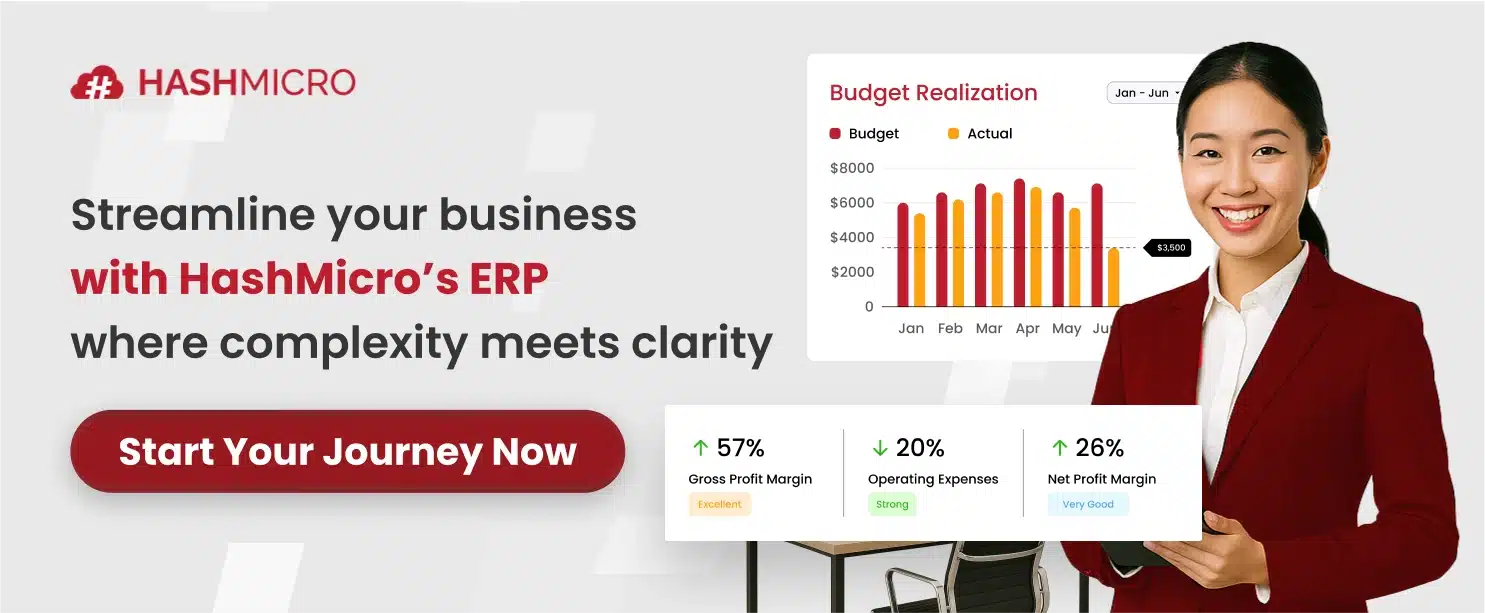Business-to-business (B2B) is the way of communication between companies. In most cases, a business-to-business strategy is used for two businesses rather than between a business and an individual. Boost your sales team productivity with the most complete Sales Management System.
For example, let’s say you are a business owner and you need some raw material for building a healthy and successful business. So, you create partnerships with suppliers who will provide you with the necessary components for your business. Hence, this cooperation will be called business-to-business.
Let’s look at some examples of B2B scale business strategies. World-famous giants such as Amazon, Walmart, and Appeal successfully use this business strategy in their operations. Additionally, this B2B relationship is held by many representatives of the automobile industry, such as Ford, Renault, and Nissan, sourcing materials from other suppliers.
This article will cover the main aspects of business-to-business strategy and talk about key points for scaling yours.
Key Takeaways
|
What Does Scaling Mean?
Let’s say your revenue suddenly increases without putting in many resources and substantial effort. This process is called “Scaling.” The main reason why this method of business development is so popular is that it requires minimum investment.
Did you know that Google exponentially scaled its seven products? In recent years, Google had over one billion active users across its seven products while having only around 88.000 employees.
Back to what we were saying…
A clearer picture becomes visible when the company is not a startup anymore. To be more precise, when it’s in the golden line of the transition from a startup to a corporation. In a nutshell, scaling is the speed and efficiency of the company’s growth.
Now when we have a clear understanding of where business scaling stands and its importance, let’s jump right into its fundamental – planning.
How to Plan for Scaling in Business
One of the cornerstones of launching a business is to have an action plan for scaling it. Increasing costs by spending more resources is not a solution. In the scaling context, your business needs to stay focused on increasing revenue and increasing efficiency.
You need to understand whether your business is capable of reaching new customers and whether it can handle the capacity or not. Before we go too much into details, answer the following questions to determine your potential growth.
- Can your business grow? Does it have the capacity?
- Can your business and human capital handle the growth?
After these, you need to come up with a detailed sales growth forecast, an estimated number of potential leads and new customers, and the number of orders and, therefore, the revenue you expect and will generate.
The second step is to visualize it.
Break down the estimated numbers by month and include as many specifications as possible. After a realistic sales and expense forecast, you will have a clear infrastructure and system to anticipate expenses.
Competitor Analysis

There are two main types of competitors: direct competitors and indirect competitors. Those who offer the same or almost the same product or services as you can be classified as your direct competitors. But how to determine them if you are only starting your business and how to shatter your belief that your product or service has no competition?
To offer the best-in-class service or product and to know where you stand in your niche and consequently stay ahead of your competition, you need to do a local competitor analysis and international if you want to scale globally.
Let’s understand how to do a competitor analysis
One way to start is through product discovery platforms, where you can easily find companies providing similar services. Firstly, you need to research your competitors’ business, and their marketing strategy and perform a SWOT analysis compared with your own business.
Conducting a competitor analysis doesn’t mean that you research and copy your competition. If you’re a novice entrepreneur, your competitors are your biggest asset. Here’s why.
- They have already gone through hectic and tedious work. If you analyze them closely, you can determine the mistakes and the failures they had and try to set up your business without going through them.
- Analyze their audience performance on social media. You will have a general idea of what your potential customers like to engage with and you can come up with even more creative and useful posts and visual ideas.
- After you understand the market environment and uncover basic activities, you also need to forecast the trends in your niche… or if there are no trends, be the trend yourself!
- As we live in a constantly changing world where everything can change in the blink of an eye, analyzing your competitors helps you always have a grasp on your market. Also, you avoid being taken off guard and you are always ready for the new trend of the market.
Looking and analyzing only your results creates an unstable baseline for your business. By comparing your business with others in the same niche, you establish a benchmark for your business, spot all the gaps in the industry and your operations, and position your brand with a well-thought-out marketing strategy.
How to Scale Your B2B Business
Many companies operate in an old-school way: tactics are simple yet effective as they were not used before in that niche. But the format of scaling a business evolves. However, for many companies, it’s a novelty, and not all of them use it to see a drastic increase in sales or revenue.
As you refine your strategy for scaling your B2B business, consider the foundational aspects such as your business’s legal structure. If Florida is your place of operation, understanding how to open an LLC in Florida can be a significant step.
The formula for scaling a business is simple: if you don’t maintain a good quality service or product, you will not be able to scale, let alone make a profit. Further ado, here’s the step-by-step guide on how to scale your business. To complement your scaling efforts, a B2B sales guide can offer in-depth strategies on optimizing your sales processes, ensuring that your business growth is both sustainable and profitable.
1. Assess your capabilities
When launching a business, every little thing makes a difference. And, when it comes to finances, budgeting, and revenue, solutions like B2B BNPL can provide flexible payment options that support smoother scaling. A comprehensive capability evaluation will help you track your company’s assets and stress the ones that are more important to your company and the ones that need improvement.
Before we proceed, answer these questions:
-
- How do you evaluate your business model?
- Do you know the strengths and weaknesses of your business model?
- Does your profit increase, perhaps decrease, or maintain?
- What about the efficiency of your business: how does it increase, decrease, or maintain?
- Do your capabilities reflect and deliver your company’s strategic promises?
Business scalability and assessment of your capabilities will forecast whether you can withstand pressure while your business, resources, and structure grow or not.
Evaluate your B2B business capabilities
Before doing the next step, you have to evaluate the following components of your B2B scale business capabilities:
- Assess the impact of the present and forecast the future regulations and policies of your business.
- Determine the business demands for each stage of development and hone your management skills to meet these challenges.
Let’s take a look at some examples…
Franchises launch their business with several advantages. They do have the advantage of having a developed marketing plan due to comprehensive research. Another advantage can be the control system and the developed operating procedures.
If B2B franchises have performed solid market research, they still can have territory restrictions and a heavy dependence on financial resources. Therefore, don’t evaluate only the positive capabilities of your business but take your time to analyze and eliminate the negative ones as well.
Pro tip: to successfully scale your business, you can acquire more territories for expansion.
Small and medium-sized businesses usually do not aspire to scale up as they have stable 30-50% profit and provide a reasonable amount of revenue.
Startups, on the other hand, have the idea to scale up from the get-go, and they tend to do it at every stage of their development. From raising financial resources to launching their business, they are determined to succeed. Moreover, they successfully evaluate both the market and their growth and, as a result, easily spread and sweep different markets.
Million-dollar businesses are not created in a day. Evaluating your results at each stage of development is a must if you want to scale.
Consequently, another important capability is innovation.
Successful companies like Microsoft, Starbucks, and General Electric have intangible assets: their quick response to market change and customer needs. They can still have many layers of management and a structured operating system – but few customers truly care about these.
Therefore, while doing capability assessment, also evaluate the market environment where you stand, and also how your customers or partners treat your business.
Pro tip: There is no magic list of capabilities appropriate to every B2B business.
- Your business can be good at business ethics, such as recruiting motivated and committed employees. One means of assessing this capability is retention statistics and employee productivity.
- Your company can be good at adjusting to change and making important decisions quickly. To evaluate your speed of scaling, you can track your ability to recognize new opportunities and exploit new markets, and the time you spend from concept to commercialization.
- Operating companies can have a strong business model as they identify deficiencies and market fluctuation on time.
Each business has its scaling metrics to track and measures to assess its capabilities. Knowing your strengths and weaknesses will always help you accomplish new heights with ease and stay professional on the way to success.
Hence, business model metrics are the specific measures to evaluate the business model that greatly help accomplish a task more professionally.
Pro Tip: stay focused and understand that the capabilities are interdependent.
Here’s how you can start your business capability assessment action plan:
- Write down what your business is doing right now.
- Define what you need to do to face present and future challenges.
- Discussion and plan strategy of execution.
- Define your goals, roles, and growth within your company.
- Assess risk and prepare for innovative endeavors.
2. Keep track of progress

Now that we know about the importance of planning and setting up goals, it’s time to understand how these goals and milestones contribute to the growth of your business.
Are you familiar with “you don’t know until you know?”
Tracking progress from beginning to end is an important business value that helps understand future outcomes and make course corrections if needed. Measuring how well your business performs can be eye-opening and a very important asset in the success of your company.
Before we dive into the know-how, let’s answer these questions first:
- What are your team’s performance and their training metrics?
- Are your marketing, ad, SEO, or customer retention campaigns effective?
- How long does it take, and how much do you spend on closing a new customer or partner?
Here’s how to track progress:
- Determine your KPIs (Key Performance Indicators). When you set short or long-term goals for your business, KPIs will visualize whether or not your progress aligns with the ultimate direction of your company. Use the SMART technique to understand where you stand, what your goals are, and the measurable time frame to reach those goals. Determine KPIs for your employees or departments as well.
- Utilize task management software to maintain a collaborative environment and establish clear roles and group objectives. Deadlines do bring more stress to the table, but if there is a shared goal and a collaborative atmosphere in the team, Deadline will help to keep all the multistage projects on track.
- Track employee progress and manage the whole team from one place. Identifying the strengths of each employee first will help you hand in suitable goals and tasks that will be mutually beneficial for both of you. Come up with a talent development system and actively inspire your employees to grow and learn new skills. Also, regularly send them to training and niche-specific seminars to hone their technical skills as well. Even better, organize experience-sharing nights where all of them gather and learn from each other. You can also consider incorporating a more flexible working schedule, allowing your team to work from home.
- Depending on your business operation type, you will also need to track and measure customer satisfaction. Surveys and forms are an ideal tool to collect these data and improve if needed. It’s great if you also integrate CRM (customer relationship management ) software to document customer-related data in one neat dashboard and review your customer satisfaction.
- Track website visits and analyze the webpage with product heatmaps. After a thorough analysis, you will know which pages drive your leads to action and which ones cause your customers or partners to abandon your cart or leave your website.
- If you have telephone customer support, track phone calls, pick the best and the worst phone calls, and discuss them with your team. Play simulation games as a teambuilding activity and ensure that everybody is on the same page when dealing with customers or partners.
- Ask your customers how they found out about you: whether it was an Instagram post, Facebook ad, Pinterest board, Google, or your loyal customer referred to your business. When you have enough data, analyze these statistics, and you will determine for yourself which channels work best for your business and where you can invest more for better results.
- Take notice of your new and repeat customers. While new customers indicate that your business is growing, returning customers indicate that you are becoming a trusted brand in your niche. Measure how many new and returning customers you acquired per campaign to predict your future growth.
- Analyze SEO activities with a website ranking checker. Track your targeted keywords and come up with informative and useful blog topics to improve your SEO rankings. When your potential partners or customers stumble upon your website through your targeted keywords from SERP’s first page, you know that you reached your SEO ranking milestone.
- Pay attention to your financial statements. Track your financial statements and invoices to understand whether your business is making progress and generating money or not Finance ERP Software automates daily business operations and optimizes client requirements fulfillment in a real-time platform. Oftentimes, you can create a stellar campaign, target an audience, and drive in the leads but not convert them.
To determine your growth, you need to start by choosing the right prioritization framework for your product or service; you also need to compare two key indicators: your improvement compared to when you were just starting and your growth compared with your competitors.
To understand how far you have come, you need to go through all the initiatives and documented promotional materials and compare them with new achievements. Remember to stay flexible and utilize agile methodologies for your business as you progress.
3. Consider Good PR
For businesses that want to scale their product or service, carrying out a PR and marketing campaign is a top priority. In most cases, companies are looking for a new audience and thus reach out to potential customers within the marketplace.
PR and communications are part of marketing activities that aim to boost brand awareness and win positive brand recognition and endorsement. PR activities are somehow trackable and offer valuable input in acquiring new leads and driving up sales.
Before conducting a PR campaign, answer the following questions:
- How to deliver the objective?
- What is the desired outcome of this campaign?
- Will the outcome justify the resources spent?
- Do the PR activities fully showcase the goals of the campaign?
- Does the PR content represent the brand narrative?
Why is it so important? Does it capture the narrative you want? Does it capture the campaign goals planned out? These are good questions to ask when building your PR campaign.
If you think that PR doesn’t bring in new leads and partners, think again!
PR and Marketing activities…
- Positively boost your brand’s identity and reputation among your target audience.
- Builds trust and confidence among your customers in your product or service.
- Positively affects your brand credibility.
Now let’s speak about the planning of your PR activities. To come up with a PR campaign, you need to do three key steps:
- Determine the budget and try to keep it as tight as possible until you identify the ones that deliver the best results.
- Dress to impress… that is, try to include and come up with a unique and refreshing story in your press release, social media campaign, or Google Ads.
- Be timely but get the timing right! You need to announce the updated version of your product, but there is an unpredictable natural disaster happening outside! So, don’t rush! Your PR campaign success needs to be delivered when it’s relevant to the readers… and your potential customers.
To deliver campaigns that impress customers, partners, and even competitors and fuel business growth, we suggest utilizing different types of marketing channels like social media and other PR tools.
Press release
you give an exclusive interview, and the journalist covers your product or service. This is a way to create and build brand awareness.
Email marketing
you can offer special discounts, invite your loyal customers to a close event, tell more about your business to your new subscribers, and whatnot with Sender tools or other email platforms.
Social media campaigns
There are a plethora of social media channels you can use to reach your target audience. Depending on your business avatar (your ideal customer), you can use Facebook and Instagram to reach out to people aged 18-25.
Snapchat and TikTok have a broader audience, and you need to be careful with your brand narrative while using these channels. LinkedIn and other professional channels offer you more advanced tools and partnership opportunities.
When aiming to engage with younger demographics, building TikTok followers can significantly enhance your brand visibility and engagement.
Branded content or partnership with other brands
Partnering with other brands on social media channels is like a one-way street but with heavy traffic. Heavy traffic is full of your target audience and potential customers.
Famous people as your ambassadors
Try to reach those famous people that you know for sure that their audience resonates with yours.
Influencers and bloggers
Find Facebook influencers and bloggers, as well as social media personalities on other platforms that resonate with your target audience and reach out to them for collaboration. Offer long-term partnerships with them to save some money AND build steady trust among your new audience.
Challenges and viral trends
You can come up with another vital challenge as long as you do not say no to the crazy ideas. Remember the ice bucket challenge or the 1m like for an egg challenge. Try to come up with a challenge and spread global awareness about your company.
Podcasts
Digital, more comprehensive, and modern radio – podcasts build brand authority and offer increased traffic. It is the alternative to videos, and people are prone to well-conceived and personal communication. Among the benefits of podcasts as a PR tool is the fact that you can directly communicate your narrative and build a connection with your potential clients.
Other hidden benefits of a PR campaign include:
- Enhanced brand and community relations and involvement
- Better edge over your competitors
- Helps raise investments and nurture stakeholder reactions.
- You start receiving various partnership and collaboration offers
PR campaigns that create a positive public relations strategy, and brand narrative have immense power to bring valuable assets to your company.
Pro tip: When creating a PR campaign or stating a brand promise and not following it will downgrade all your marketing efforts.
4. Invest in technology

When you track your progress, you need to be better equipped to meet today’s demands and challenges.
Scaling through technology and software is unique per company, and there is no general rule of thumb that incorporates all the niches, especially with the rise of emerging technologies in software. When you know your business, you know which tools you need to utilize so that it can be agile and responsive to internal and external challenges.
In the digital world, the role of technology makes the lives of the customers easier. Technology has always been there to support processes and execution systems. Scalability and innovative software solutions are inseparable and help businesses efficiently transition as they grow.
Technological advancements help adapt to the growing needs and constantly changing customer behavior patterns. This refers to both macro and micro-level goals of the business.
For example, if your plan is to scale your B2B through a brilliant email marketing campaign, you need to consider things such as relevant content and use platforms to avoid email scams for both senders and receivers.
Startups, companies based on technology operations, and IT organizations easily scale their entities with the help of automation and other software. Technology helps avoid scamming too, by integrating DMARC in emails and keeping an eye on the DMARC report.
Technology can benefit even those businesses not directly connected to it. Therefore, there is a growing trend in incorporating an IT department into diverse companies.
Examples?
Companies are opt-in to go entirely online without the need for a physical store and generate an estimated $10.000 revenue per month. Financial companies invest in online banking systems for the sake of online transactions and the elimination of going to the bank.
After switching to modern technologies, 40% of the companies report better responsiveness and flexibility. We think you can be in a dilemma. Before investing in software, consider answering these questions.
- Is it the right time to invest in technology and transform my business?
- Am I going to lose customers and a competitive edge if I don’t invest in technology?
- How technological solutions can help in the continuity of my business process?
Let’s understand the role of technology in business.
Business technology puts forward your product to a global audience where you can compete with bigger players. But in a world where technology has paramount importance, the business that stays customer-centric takes it all.
Here are the extended list of benefits and the current role of technology in business.
- Technology offers security. You can utilize different security systems, such as a folder security report system, and stay assured that your files and important documents are protected.
- Technology saves you time. Many time-consuming and repetitive tasks are now automated or simplified. Gallup reports that after investing in technology, productivity increased by 20%.
- Technology saves you money. Software automation allows businesses to automate mundane paperwork, accounting, payroll, and much more.
- Technology offers better customer support. With chatbots and automated communications tools, you can now respond to your customers on time and close your leads faster.
- Technology simplifies your resource management and globalization.
Moreover, with the extensive use of the internet, our computers and software collect an immense amount of data. Technology solves the problem of analyzing small or big amounts of data and simplifies the decision-making process.
Another interesting fact you might have noticed
During the pandemic and post-COVID, statistics show that employees are 20% more productive while working from home and 13% more efficient thanks to low distraction and the freedom to complete tasks on the go but throughout the day at their earliest convenience.
More up in the sleeve…
To simplify the B2B scale processes, there is also contract creation and management software for you to create error-free contracts and agreements. Here are other functions of technology and automation and management solutions businesses can use:
- Purchase Inventory and Warehouse Management
- Order Fulfillment and Shipping
- Returns Processing
- Website and E-commerce Channels
- Payment Processing
- Reporting and Forecasting
Technology allows your business to use internal and external communication software, and update and store documents and agreements. With just two or three clicks you can pass on the required data no matter the size to another department, customer, or partner. Instantly.
5. Run targeted campaigns
Social media brought a new wave, a new normal, into our day-to-day lives to the extent that we cannot imagine the world without it.
A digital marketer knows how to target and set up a digital campaign. It takes a lot of effort to outshine your competitors. Here are some social media ad campaign scaling tips to juggle multiple platforms more effectively.
What’s more important in ad campaigns is again – timing! To understand the best time to post on Instagram, Facebook, or other social media channels, just analyze the data or utilize a tool to make informed decisions.
The strategy provides the necessary and expected results, and the social channel is just a tool to realize and reach this goal. Target advertising is a post and a visual placed on specific areas of a given platform or channel for many reasons. Below are some of them.
- Increase visibility
- Engage with audience
- Convert.
Here are the main ways to scale your Facebook and Instagram ad performance:
- Increase your ad spend and budget
- Test new lookalike audiences and interests
- Target broader or new geographic locations
The logic behind placing ads on social media is simple. While the majority of the platforms have different algorithms to reach your target audience, the interface and the tools are similar.
As mentioned, the algorithms are different per channel. LinkedIn ads deserve a separate mention here, as they took an off-road route with their targeting, allowing marketers to target high-quality leads in a professional context, with campaign data flowing from LinkedIn ads to databricks for comprehensive performance analysis. You can also consider previous client feedback, any experience they had with your company, and how they feel about you.
Furthermore, if you want to place ads on bloggers’ or influencers’ pages but have no idea which influencer has a close or similar target audience, you can use influencer discovery websites to look for influencers in your niche and compare them.
The more you analyze Ad campaigns and brand storytelling examples, the clearer picture you will have of different branding and positioning tactics.
Here’s everything you need to know about how to use the Internet to sell products online and scale your B2B business!
6. Consider Your Budget
Scaling a business is no easy feat. The truth is, that it takes time, effort, and careful planning. It also takes resources. Whether you have an in-house business development and marketing team or outsource it, you’ll have to make budget allocations to ensure your efforts are successful.
Those allocations require planning and preparation: deciding how much you will spend on a certain campaign or piece of content on the go may not be the most strategic decision.
Therefore, you must create a budget calculation dedicated to your business scaling efforts. This can seem a bit overwhelming, especially if you are developing a budget for the first time. But fret not! Below are some things you need to pay attention to that will simplify and speed up the process.
Identify your key expenses
If you haven’t just opened your company, you’ve probably done some marketing and promotional work and know that it takes resources.
Let’s look at the example of social media channels: they are free tools in themselves, but content creation and social media management require considerable time and financial investments.
Additional tools you are using, such as website trackers, analytics, etc. also require spending. Then there are other marketing channels, such as paid ads and SEO.
Make a list of all the things that you are spending your marketing resources on and analyze them carefully. If you aren’t satisfied with the results and expect more for the same budget, maybe you should alter your strategy, or reconsider your spending.
Consider how much you can allocate
Now that you know your key expenses and know how much you are already spending on promotion, you can compare it to your existing resources.
How much more can you add to your scaling strategy without hurting other parts of your brand? Understand how much you can allocate, and how much of it is already in use, and develop your scaling plan based on those numbers.
For example, if you can allocate $3000 for your social media strategy, spending it all on Instagram ads may not be the wisest idea, because your other channels will suffer.
Set your expectations
Naturally, you’ll have to achieve the best possible results, however, keep in mind that the results also depend on the investment and the budget. Therefore, it’s key to be realistic about what you can get from the investments that you make, to set achievable goals, and plan them strategically.
Think of the security
The number of digital payment options is constantly growing, and once you develop your budget and start the process of scaling your business, chances are, you’ll have no shortage of them. However, this abundance has also resulted in a situation where theft and data breaches are common.
While this is not often the case for ad payments on Facebook or Google, if you are outsourcing the job to an international company, or working with freelancers, this can become a real issue.
This is one of the reasons many businesses are now switching to crypto payments: they allow more secure and instant transactions. One option is the blockchain-based cryptocurrency Litecoin. Ethereum and Bitcoin are other popular choices among companies worldwide. For added security, partnering with the best smart contract audit service ensures that your transactions remain safe.
If you decide to go with crypto payments, consider using a portfolio tracker to always be in the know about your crypto assets, and check their valuation. Also, a trading bot can help you to trade crypto easily.
Bonus Tips To Get Ahead Of The Competition

Stay Special
Staying special for your customers and partners, always offering the best and unique services, takes a lot of effort. However, it is what makes you different and sets you apart from your competitors.
Not being able to match your branding will give you a considerable competitive leg up. So always stay special for your target audience. It’s rewarding, and it’s always engaging.
Stay true to your narrative
Preserve your narrative and always act per your campaigns. Suppose you promise to deliver high-quality service or offer superb customer service. Do so! Acting with integrity will level up your reputation and encourage trust among your audience.
Take your time to know your target audience
You and your business must know your customers’ needs and values as their budgets change. Take your time to understand their pain points, whether they are looking for the best price, special discount, or local service.
Retain Existing Customers
No one can beat your high standards if you have high-quality customer support and retention systems. Your competitors will lure your customers in with better offers, better quality, or better service unless you provide an HQ server at a competitive price. Loyal customers mean satisfied customers.
Form long-term partnerships
To Identify the needs of your partners, brainstorm. Come up with working solutions on how to help them with their business needs.
When you offer unbeatable value to your customers and partners, the margins between price and cost will gradually get bigger and bigger. Go the extra mile, provide world-class service to your partners, and attract even more customers.
Long-term partnerships strengthen your bond and open up new opportunities that might not have come to you otherwise.
Crowdfund your product
Nowadays, crowdfunding is not only a means to gather money but also a way to test your product or service demand. With their sophisticated system, two of the leading crowdfunding platforms offer their services for you to do the market research and product demand. If you consider crowdfunding.
Here’s a comprehensive guide on Kickstarter VS Indiegogo and which one to choose for your marketing needs and niche specifications. Also, take your time to analyze the big pool of products and the most funded Kickstarter projects for some useful tips and inspiration.
Be flexible and don’t be afraid to be the change
Your competitors zig, and you are afraid to zag?
If failure holds you back, there is a nice quote that says: “Fail fast, fail often”.
When you envision a crazy idea, you can eventually reap the harvest. As you end up being the only one that took that bumpy road to success. Trust yourself, and your team, and bring back the motivation and your driving engine (the reason why you started your business). Continue to face as many challenges on your way as possible.
Conclusion
So, you’ve decided to scale your business! And that’s one big and chunky congratulations!
Here’s where the understanding of scaling a business can help. That’s why we’ve rounded up five key aspects and hacks to improve your business operations and overall performance.
Implementing these hacks and integrating technology will not only improve your marketing strategies and PR campaigns. It also helps attract new partners and customers.
Do you think you are ready to scale your business toward growth and sales?
Scale your business when you are ready. Prepare solid groundwork. Make sure that your product or service will create hype. Make everyone talk about it, and then scale towards unseen growth.
Your biggest asset: continuously add real value and superior customer service to create raving fan partners. Don’t forget to use the ERP System, which helps you to streamline your business processes & company’s growth significantly. You can schedule a free demo from HashMicro to experience the transformational power it brings to your operations.















